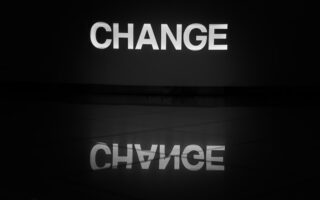In order to inspire and direct meaningful change within an organization, it requires effective leadership. And when it comes to effective leadership, there isn’t a one-size-fits-all approach. Different situations might call for different leadership styles, and that’s where these five diverse models for leading change come in handy. So grab a cup of coffee and let’s browse through them:
1. Leadership that Gets Results, also known as Daniel Goleman’s Golf Clubs
Daniel Goleman is a name synonymous with emotional intelligence. Drawing from his wealth of knowledge in this area, Goleman developed six styles of leadership. He likened them to a set of golf clubs, useful for different scenarios on the course.
The six styles are Affiliative (people-centered), Authoritative (visionary), Coaching (future-focused), Democratic (participative), Pace-Setting (high-performance oriented), and Coercive (demanding). How and when they should be used depends on various factors; from team dynamics, organizational changes to individual performances.
2. Situational Leadership by Hershey and Blanchard
Hershey and Blanchard’s model suggests that leadership behaviors fall into two categories: Directive and Supportive. Directive behaviors involve explicitly instructing team members, while Supportive behaviors are all about listening, encouraging, and engaging the team.
The duo identified four leadership styles derived from a combination of these behaviors: Directing, Coaching, Supporting, and Delegating. The art lies in recognizing which style responds to your team or individual’s current needs.
3. The Framework for Leadership by Fullan
Fullan’s model came together after observing change in education and business settings. He recommends an eclectic mix of energy, enthusiasm, and hope, coupled with five core components of leadership: Moral purpose, understanding change, relationship building, knowledge creation and sharing, and coherence making. As Fullan would have it, when these elements are present, success tends to follow.
4. Agreement and Certainty Matrix by Stacey
Now, if your organization operates in an unpredictable, fast-paced world (and let’s be honest, most do), the Agreement and Certainty Matrix by Ralph Stacey might be just what you need.
Stacey’s model is designed for complexity. It suggests that in such contexts, the norm of rational decision-making may be replaced with a higher level of interaction with those implementing and affected by change.
5. Transformational Leadership by Alimo-Metcalfe
Referencing the work of Burns and Bass, Alimo-Metcalfe’s model outlines ‘Transformational Leadership’. In stark contrast to ‘transactional’ leadership concerned with day-to-day operations, this model is all about inspiring and unifying people with a compelling vision.
Transformational leaders show concern for others’ development, empower and trust their staff, encourage innovative thinking, act with integrity, and facilitate change sensitively. So how do you score on the transformational leadership scale?
Conclusion
Whichever model you gravitate towards, the trick is not to box yourself into just one. The beauty of these models lies in their diversity, offering varied approaches for different situations. Whether you lean on Goleman’s insight around emotional intelligence, are inspired by Alimo-Metcalfe’s transformational leadership, or resonate more with other models – it’s about grabbing the right tool at the right time to foster effective, impactful change.
So, reflect on each model and what they have to offer. Your reflection might help you to spot gaps, recognize preferred styles, inspire change, or motivate a refreshing shift in your approach toward leading change. And remember, these models don’t tell you who you must be, they simply point out the various shapes effective leadership can take.







